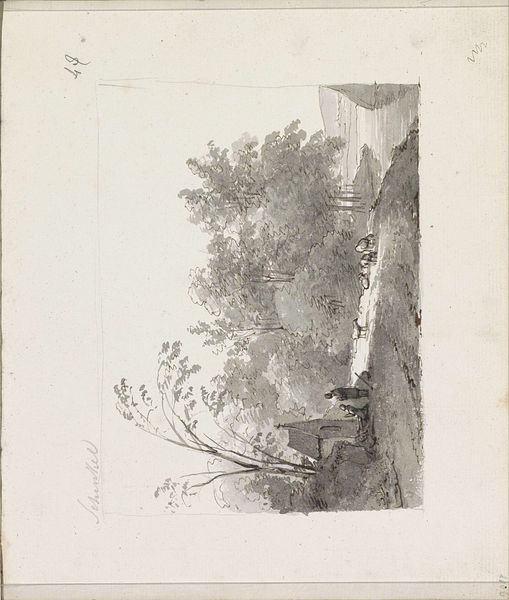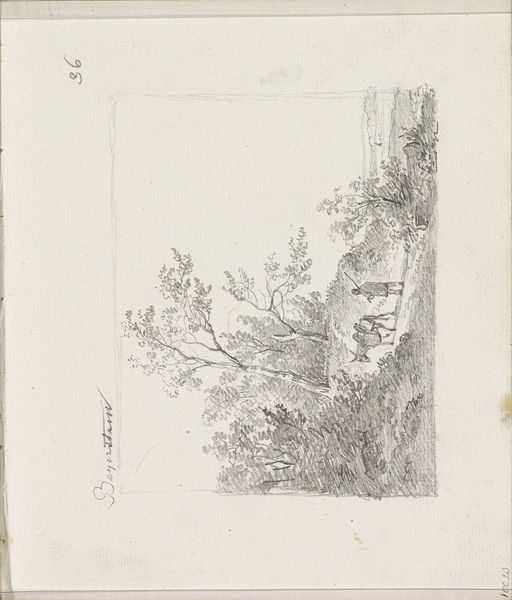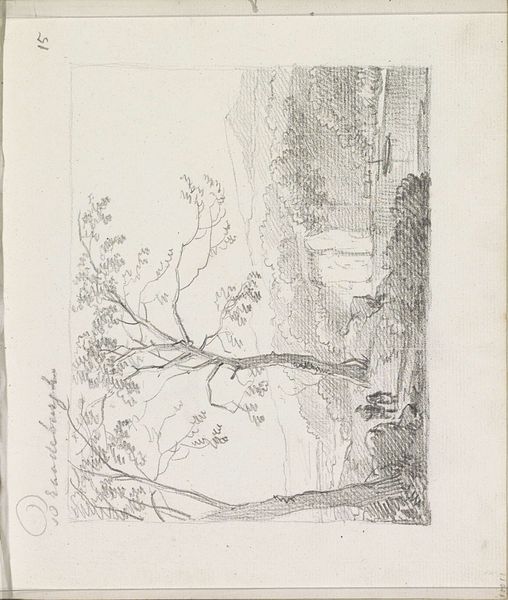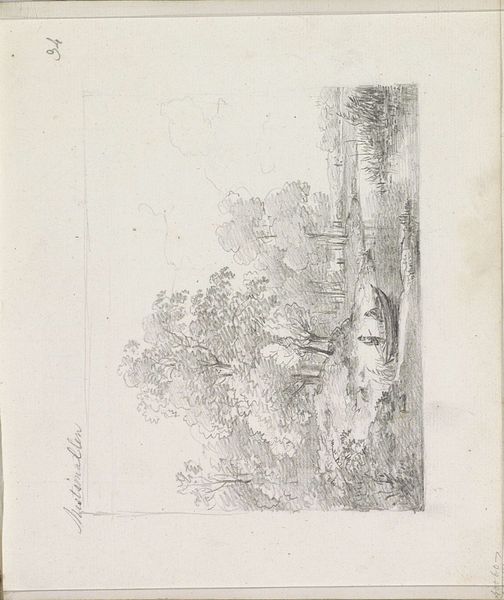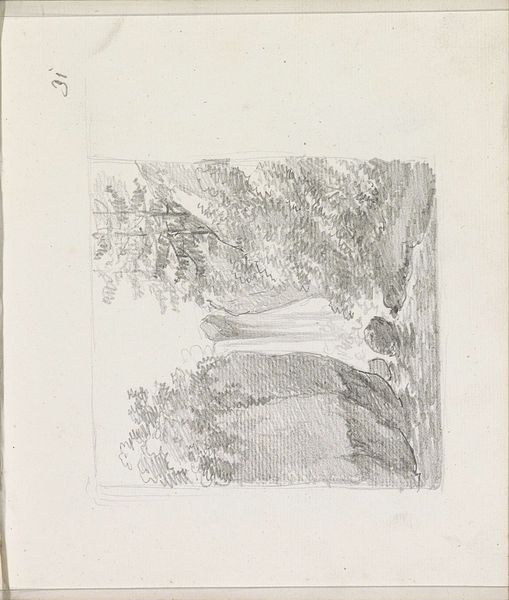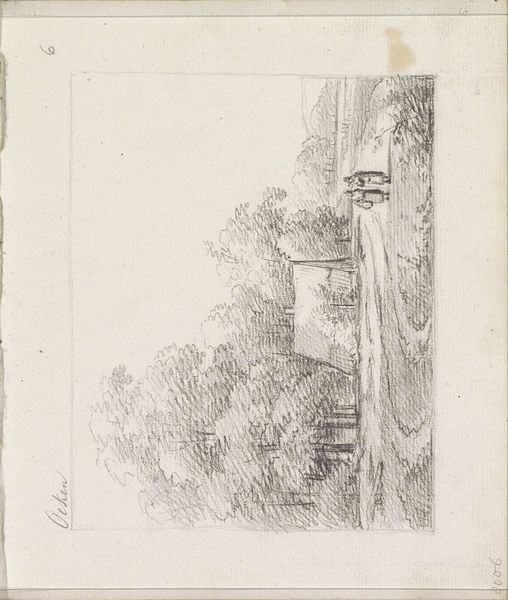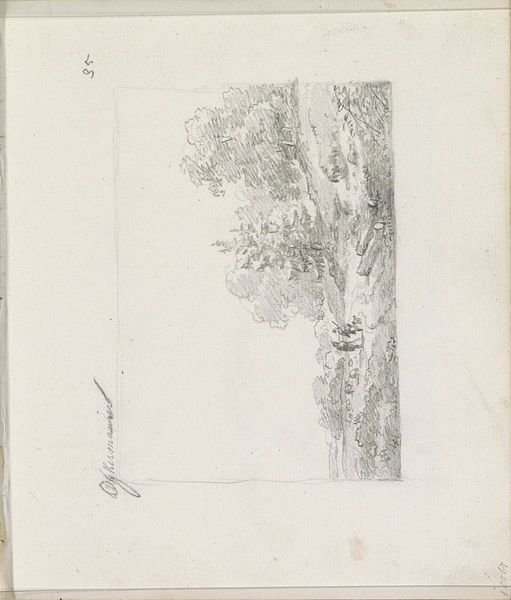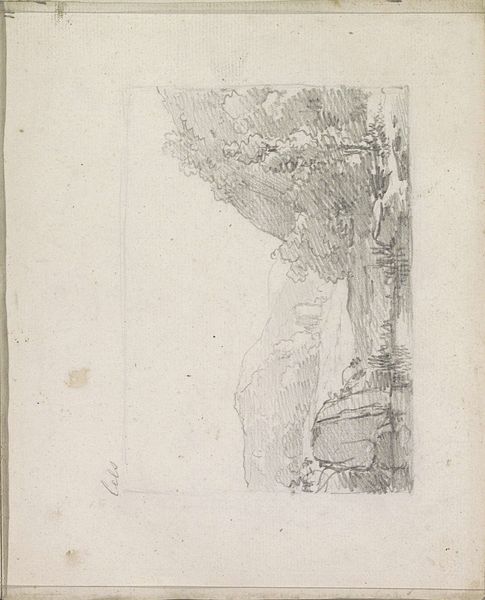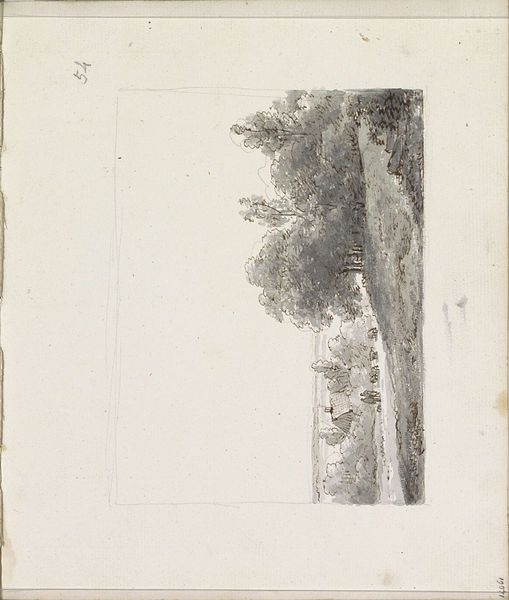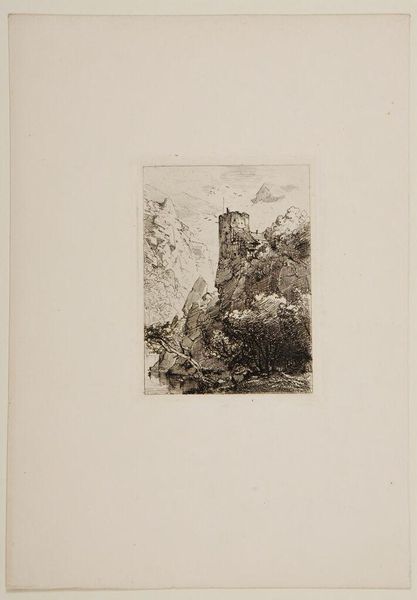
drawing, pencil
#
drawing
#
pencil sketch
#
landscape
#
romanticism
#
pencil
#
realism
Copyright: Rijks Museum: Open Domain
Andreas Schelfhout created this evocative landscape with pen in gray ink and gray wash, capturing a herder and their sheep in a rocky terrain. The choice of monochrome immediately sets a tone, reflecting the artist's interest in tonal values and the play of light across forms. The drawing’s effect hinges on the artist's mastery of ink, and the expressive potential of layering washes to create depth and texture. Schelfhout uses the ink to model the contours of the rocks, trees, and the flock of sheep, giving the scene a sense of dimension and atmospheric perspective. It is clear that the amount of work put into the drawing and the way in which the washes of grey ink were built up, was important in this work. Schelfhout was attentive to the social context of the landscape; in this case, labor is reflected through the figure of the herder, and also the depiction of animals that played a crucial role in Dutch agriculture and economy. The artist makes a statement about the way in which people and animals lived. Paying attention to both materials and social context helps us move beyond conventional notions of art, allowing us to truly understand the piece.
Comments
No comments
Be the first to comment and join the conversation on the ultimate creative platform.
